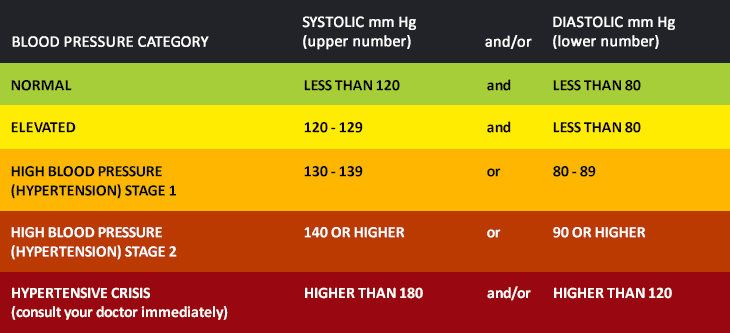Hypertension - Getting Loud About a Silent Problem
by Rylan Graber
December 2021
What if North Dakotans could pay attention to just one thing that could help them avoid having a heart attack? Or a stroke? Or avoid going on dialysis because their kidneys have stopped working? Or even for some, prevent dementia and losing memories or the ability to recognize loved ones? For 30% of North Dakotans the one thing that could make the difference in preventing these problems would be lowering their blood pressure.
High blood pressure is a silent problem. According to a North Dakota Department of Health report, along with the 30% of North Dakotans who already know they are at increased risk of heart attacks, strokes, or kidney failure due to high blood pressure, experts estimate that up to 20% of North Dakotans don't know their blood pressure is in the range that can increase their risk for these problems. Adding these together, nearly half of North Dakotans are affected.
What is high blood pressure? High blood pressure, also called hypertension, is the pressure, or force, used by the heart to pump blood throughout the body. It's reported in two numbers, commonly referred to as the "top" or "first number" and the "bottom" or "second number." According to the American Heart Association, systolic blood pressure is the formal term for the top number and is a measure of the force it takes to pump blood through the body's arteries. The higher the top number, the greater the force the blood exerts against the walls of the arteries. Diastolic pressure is the name for the bottom number. It's a measure of the pressure in the arteries when the heart rests between beats. Currently, a diagnosis of hypertension is made when the systolic pressure is over 140 and a diastolic blood pressure is over 90 that is found on two separate occasions.

Over time, the excess pressure on arteries in the heart, kidney, and brain promotes blockages, blood vessel weakness or can even cause the vessels to burst. This can be thought of like a faucet and a hose. If there is a blockage or narrowing in the hose, it will cause a pressure backup in the rest of the system. This extra pressure increases the amount of stress on the walls of the hose (arteries). If there is enough build up this will eventually get back to the faucet (heart) and lead to more stress on the system.
Though this may sound all-doom-and-gloom, the good news is, that for some patients, hypertension can be reversible and doesn't have to be a permanent problem – but only if it starts with getting the blood pressure checked. If abnormal, there are ways that it can be reversed – and it doesn't have to be fixed in a day. Some examples of how high blood pressure can be lowered is by diet changes, reaching an ideal weight, and beginning an achievable exercise plan.
It's important for patients to believe that they can make changes to their lifestyle, become more active and have control over losing some extra weight. Lowering blood pressure doesn't have to be done in leaps to get to a goal quickly. It can be done in baby steps. Just a few simple changes can make a huge difference limiting risk and improving quality of life. The first step is knowing and monitoring blood pressure so that this silent problem can be managed in a not so silent manner.
This article also appeared in the December 30, 2021 issue of the Adams County Record.
About the Author
 Rylan Graber is a third-year medical
student at the University of North Dakota School of
Medicine & Health Sciences. He was selected as the
Hettinger participant for the school's ROME program, or
Rural Opportunities in Medical Education. Because the
program includes teaching student doctors about the
importance of how rural newspapers can deliver health
information, he has written this column for his ROME
community. The information is not for diagnosis or
treatment and should not be used in place of previous
medical advice provided by a licensed practitioner.
Rylan Graber is a third-year medical
student at the University of North Dakota School of
Medicine & Health Sciences. He was selected as the
Hettinger participant for the school's ROME program, or
Rural Opportunities in Medical Education. Because the
program includes teaching student doctors about the
importance of how rural newspapers can deliver health
information, he has written this column for his ROME
community. The information is not for diagnosis or
treatment and should not be used in place of previous
medical advice provided by a licensed practitioner.
